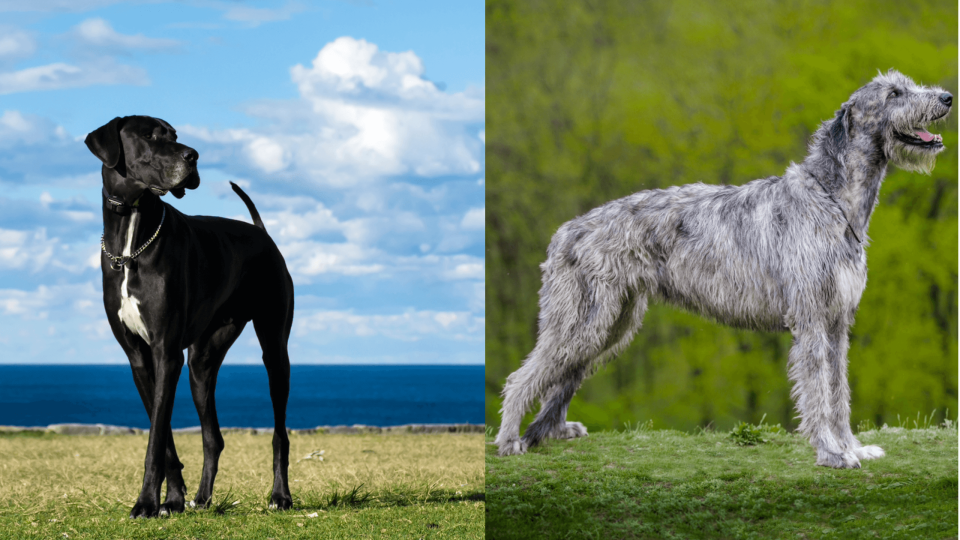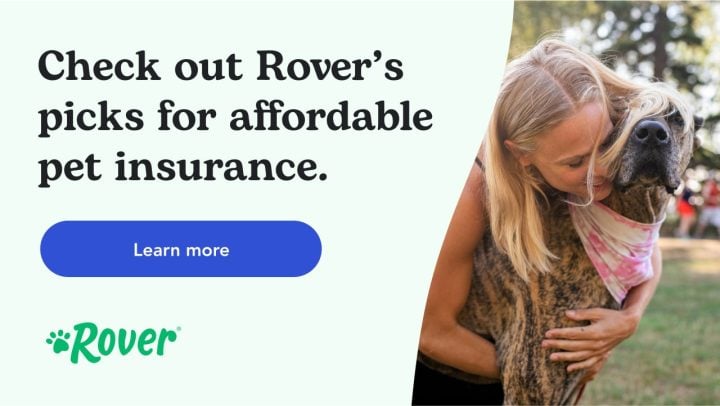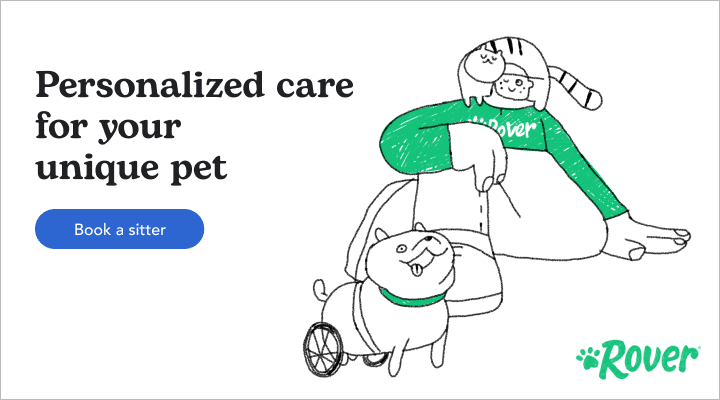If you’re looking for a gentle giant of a dog, the Great Dane or Irish Wolfhound are both excellent choices. Let’s compare these two breeds so you have a better idea of which one suits your lifestyle best.
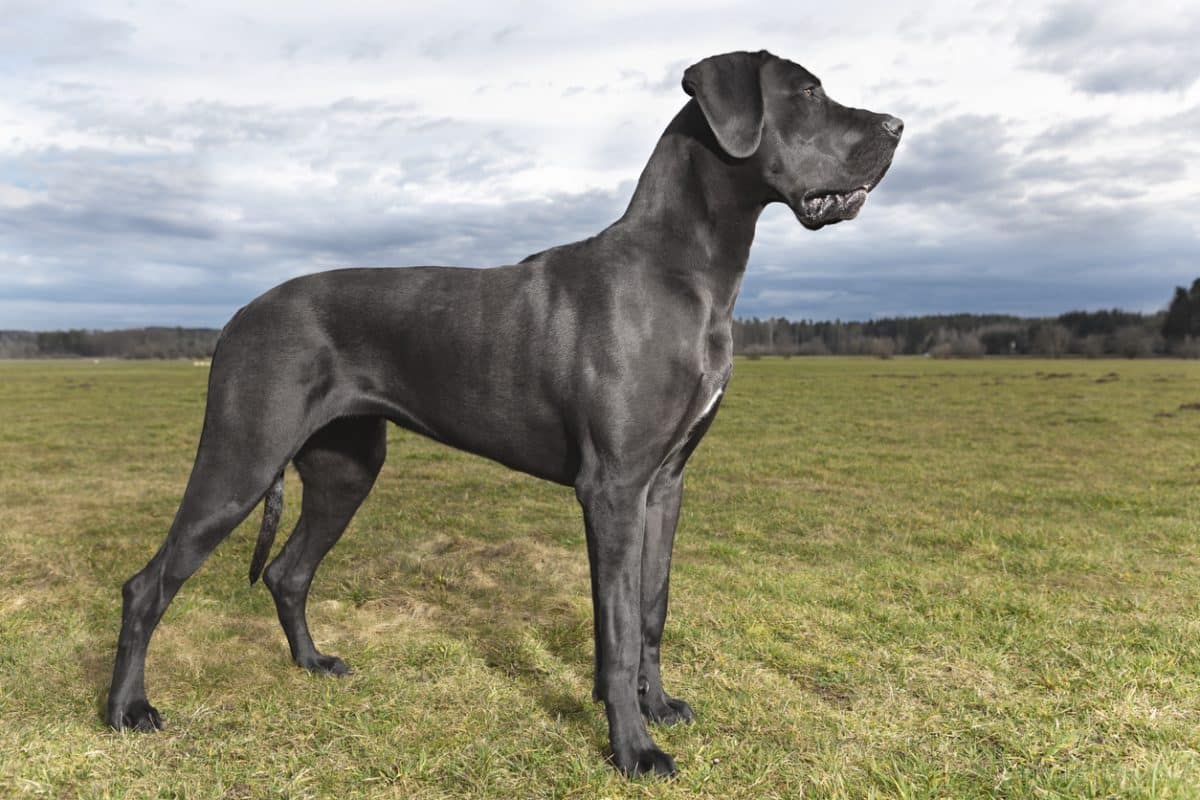
iStock/RalfWeigel
Origins and History
Both breeds are quiet and soft-hearted, but their ancestors were quite fierce.
Great Danes were bred in Germany to hunt boar. They also served as guard dogs for noble estates. Modern Great Danes can still act as living doorbells. “When there’s a knock on the door, they’re going to let you know that there’s somebody there,” say breeders Brian and Wendy O’Donnell of Stardust Danes.
Irish Wolfhounds, on the other hand, specialized as sighthounds. They chased down wolves, boar, deer, and massive elk. Many modern Irish Wolfhounds still have a prey drive and may chase small animals.
Physical Characteristics
| Great Dane | Irish Wolfhound | Summary | |
| Size | Females can be 28-32 inches tall, while males are an average of 30-34 inches tall. | Females can be 32-34 inches tall, while males are between 34-45 inches tall. | While both breeds are massive, Irish Wolfhounds are slightly taller. |
| Build | Great Danes have a Mastiff body type, with heavy, robust frames. Brian O’Donnell says Great Danes can weigh around 150-160 pounds. | Irish Wolfhounds are a Greyhound-like breed with a lean and agile build. Females can weigh between 115-140 pounds, while males can be 140-180 pounds. | Due to their musculature, Great Danes are relatively heavier than Irish Wolfhounds. |
| Appearance | Great Danes have square muzzles with large ears. | Irish Wolfhounds have long, angular muzzles and small ears. | Irish Wolfhounds have a wilder, more wolfish face. |
| Coat Color | Great Danes have seven official coat types: blue, black, brindle, fawn, harlequin, mantle, and merle. | Irish Wolfhounds have six official coat types: black, brindle, fawn, gray, pure white, and red. | Some Great Danes have patches of solid color around their legs, chest, and face. Irish Wolfhound coats are either a solid color or speckled all over. |
| Coat Type | Great Danes have short, smooth coats that shed an average amount. “The hairs are so small, you won’t see them until you start sweeping,” says Wendy O’Donnell. The coats ‘blow out’ in spring and fall. | Irish Wolfhounds have a long, wiry outer coat and a softer undercoat. They shed the same year-round. | Neither dog is a huge shedder, but Great Danes have seasonal blow outs where you’ll need to sweep more often. |
| Grooming Requirements | Great Danes only need weekly brushing unless they’re in a heavy shedding cycle. The O’Donnells shower their dogs once a month. | Irish Wolfhounds need brushing once a week. You’ll need a handheld rake to clear out the undercoat and a pin brush for the wiry outer coat. You also need to bathe them once a month | Both breeds are low maintenance. Great Danes may need extra brushing during seasonal blow outs, while Irish Wolfhounds may need more grooming tools to handle their double coat. |
| Health | Great Danes can develop Wobbler’s Syndrome, where spinal instability gives them an unsteady gait. They can also have hypothyroidism and cataracts. | Irish Wolfhounds are prone to liver shunt, where blood bypasses the liver and doesn’t get filtered. They are also more likely to develop pneumonia and thyroid disease. | All giant breeds are vulnerable to certain health issues due to their size. These include bloat, dilated cardiomyopathy, and hip dysplasia. |
| Average Lifespan | Great Danes live between 8-10 years. | Irish Wolfhounds live between 6-8 years on average. | Neither breed is long-lived, but Great Danes do have a slightly longer lifespan. |
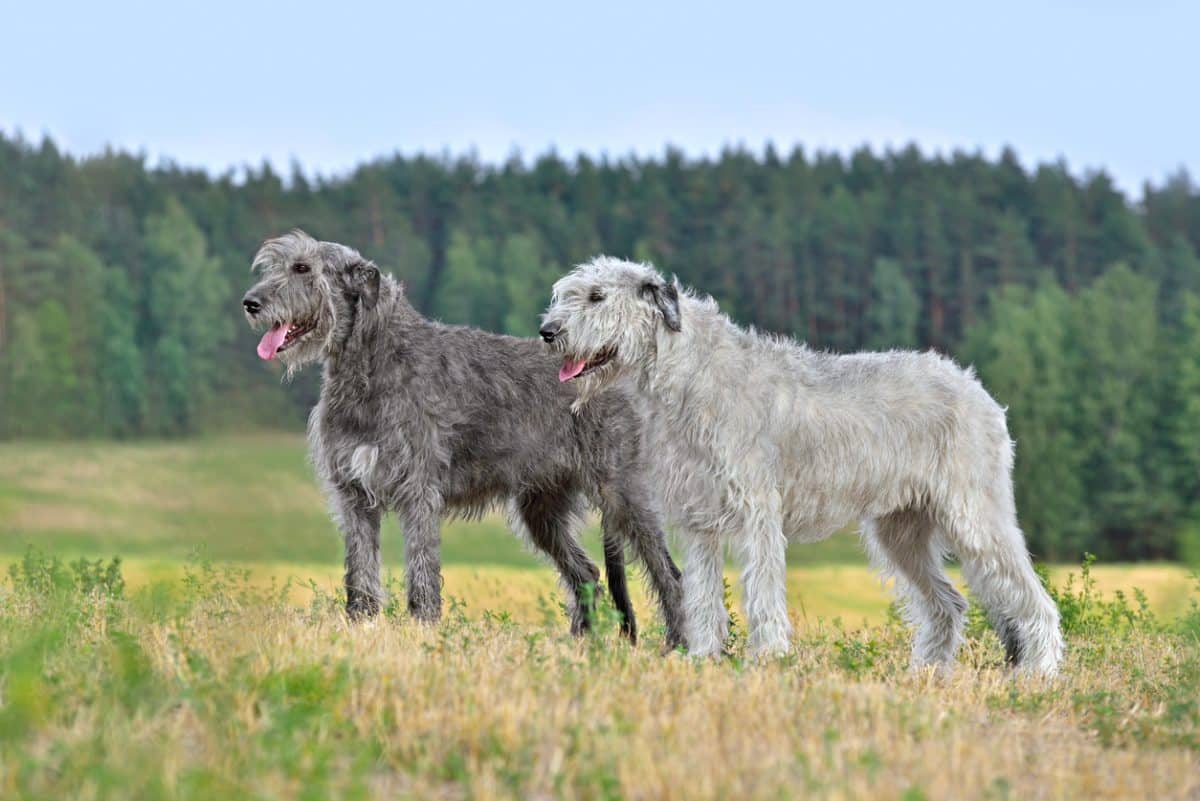
iStock/eAlisa
Environmental and Emotional Needs
| Great Dane | Irish Wolfhound | Summary | |
| Temperament and Personality | Great Danes have goofy, affectionate personalities. “They love to lean on you,” says Brian O’Donnell. “They don’t know their own size.” | Irish Wolfhounds are serene and sensitive. They are polite with their family and expect to be treated respectfully in return. | Great Danes love fun and attention, while Irish Wolfhounds need quiet and calm. |
| Training | Wendy O’Donnell says Great Danes are very eager to please, so training them is easy. She adds it’s essential to do basic obedience training early, before they develop into giants, since Great Danes don’t always know their own strength. | Irish Wolfhounds are highly intelligent, but they are also quite sensitive. They may shut down mentally if they feel you are being impatient or rough. They may need extra coaxing to follow the ‘sit’ command, as their bony bodies can find that position uncomfortable. | If you want a dog who will fetch and do tricks for you, a Great Dane may be a better match. Irish Wolfhounds can be selective about which commands they follow. |
| Exercise Requirements and Energy Levels | Great Danes don’t need much of a workout. The O’Donnells say they like to play or run in short bursts and then relax. | Irish Wolfhounds were born to romp and roam. They have a lot of energy and need more exercise than smaller dogs. | While Great Danes are playful, they don’t have the same level of endurance as Irish Wolfhounds. |
| Good with Kids? | Great Danes love to have fun. “They’re good for kids, especially older kids,” says Wendy O’Donnell. | Irish Wolfhounds are kind and patient toward children. However, you should never let your kid “ride” the dog, as their bodies aren’t built for carrying people. | Both dogs are good with kids. However, they may accidentally knock toddlers over due to their large size, so you’ll need to supervise playtime with younger kids. |
| Compatible with Other Pets? | Great Danes can usually get along with other dogs. However, their hunting background does give them a prey drive, so the O’Donnells say you need to be careful when introducing smaller pets like cats. | Irish Wolfhounds are easygoing, but pushy or irritable dogs may turn them off. As sighthounds, they do have a prey drive, so they may chase smaller pets like rabbits and cats. | These breeds can easily bond with other dogs, but they may need extra training to get along with other species. |
| Ideal home | Great Danes are fairly flexible when it comes to living arrangements. They can live in an apartment or a house so long as you walk them regularly. | Irish Wolfhounds love to run, and they need a fenced-in yard to stretch out their legs. The fence should be physical and above ground, as these dogs may sprint through an invisible fence. | Irish Wolfhounds need a yard, so Great Danes may be better suited for families in the city. |
| Ideal Job | Great Danes are alert and dependable, and their origins as estate guards make them good watch dogs. | Irish Wolfhounds’ calm demeanor and convenient height make them good therapy dogs. | Both breeds are happy to be unemployed house pets, but they can be trained to work if needed. |
| Ideal person or family | Brian O’Donnell says Great Danes can develop separation anxiety, so they do best with someone home during the day. They’re great family dogs, and they thrive in cuddle piles. | Irish Wolfhounds need a quiet home with lots of outdoor space. Their ideal owner will be patient and show them lots of affection. | Both of these breeds make loyal, kind-hearted companions. However, they need to be close to their humans. Ideally you would work from home or take them with you to the office. |
Conclusion
While Great Danes and Irish Wolfhounds are both giant breeds, Irish Wolfhounds are slightly larger. They have a longer, rougher coat than Great Danes do, but neither breed requires much grooming.
Large breeds like these can be prone to joint issues, heart disease, and other health issues. They also tend to be short-lived. Because of these risks, you’ll need to make sure to take your Great Dane or Irish Wolfhound for regular vet checkups.
These breeds are both gentle, affectionate dogs. However, Great Danes tend to be easygoing goofballs, while Irish Wolfhounds are sensitive free spirits. Great Danes tend to be easier to train due to their people-pleasing nature.
Both dogs make great family pets, and they are patient with children. However, their hunting ancestry has given them a prey drive, so they may chase any cats in the house. They both need humans who are home on a regular basis to give them company and affection.
If you’d like to learn more about Great Danes or Irish Wolfhounds, consider meeting with a breeder. Either dog would make a lovable addition to your home.
